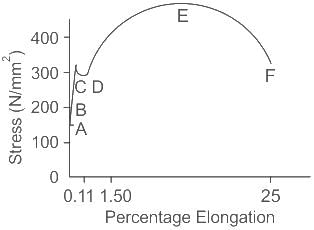NEET Exam > NEET Tests > Test: Stress and Strain (August 13) - NEET MCQ
Test: Stress and Strain (August 13) - NEET MCQ
Test Description
10 Questions MCQ Test - Test: Stress and Strain (August 13)
Test: Stress and Strain (August 13) for NEET 2025 is part of NEET preparation. The Test: Stress and Strain (August 13) questions and answers have been prepared
according to the NEET exam syllabus.The Test: Stress and Strain (August 13) MCQs are made for NEET 2025 Exam.
Find important definitions, questions, notes, meanings, examples, exercises, MCQs and online tests for Test: Stress and Strain (August 13) below.
Solutions of Test: Stress and Strain (August 13) questions in English are available as part of our course for NEET & Test: Stress and Strain (August 13) solutions in
Hindi for NEET course.
Download more important topics, notes, lectures and mock test series for NEET Exam by signing up for free. Attempt Test: Stress and Strain (August 13) | 10 questions in 20 minutes | Mock test for NEET preparation | Free important questions MCQ to study for NEET Exam | Download free PDF with solutions
Test: Stress and Strain (August 13) - Question 1
The slope of the stress-strain curve in the elastic deformation region is ____________
Detailed Solution for Test: Stress and Strain (August 13) - Question 1
Test: Stress and Strain (August 13) - Question 2
Which point on the stress strain curve occurs after the proportionality limit?
Detailed Solution for Test: Stress and Strain (August 13) - Question 2
Test: Stress and Strain (August 13) - Question 3
Which point on the stress strain curve occurs after yield plateau?
Detailed Solution for Test: Stress and Strain (August 13) - Question 3
Test: Stress and Strain (August 13) - Question 4
The impact strength of a material is an index of its
Detailed Solution for Test: Stress and Strain (August 13) - Question 4
Test: Stress and Strain (August 13) - Question 5
Hooke's law holds good up to the limit of __________ .
Detailed Solution for Test: Stress and Strain (August 13) - Question 5
Test: Stress and Strain (August 13) - Question 6
The plastic response (deformation) of a material to compressive force is known as:
Detailed Solution for Test: Stress and Strain (August 13) - Question 6
Detailed Solution for Test: Stress and Strain (August 13) - Question 7
Test: Stress and Strain (August 13) - Question 8
In the given stress-strain curve of mild steel, DE represents:

Detailed Solution for Test: Stress and Strain (August 13) - Question 8
Detailed Solution for Test: Stress and Strain (August 13) - Question 9
Test: Stress and Strain (August 13) - Question 10
If a piece of material neither expands nor contracts in volume when subjected to stresses, then the Poisson’s ratio must be
Detailed Solution for Test: Stress and Strain (August 13) - Question 10
Information about Test: Stress and Strain (August 13) Page
In this test you can find the Exam questions for Test: Stress and Strain (August 13) solved & explained in the simplest way possible.
Besides giving Questions and answers for Test: Stress and Strain (August 13), EduRev gives you an ample number of Online tests for practice
Download as PDF



















